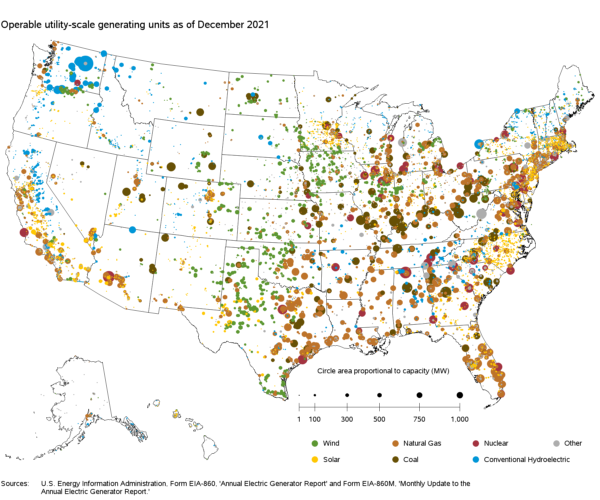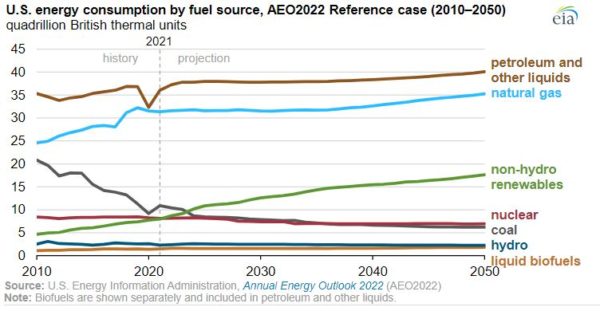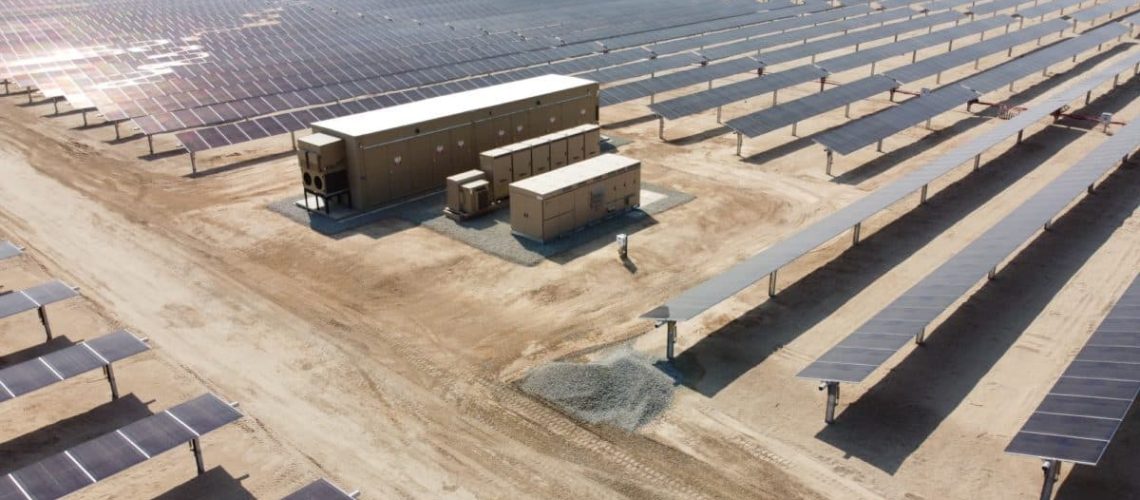The Energy Information Administration projected over the next two years 60% of capacity additions will be solar or battery energy storage.
Utility-scale solar and battery energy storage are set to be the dominant new source of energy capacity additions, as over the next two years the Energy Information Administration (EIA) predicts the two technologies will combine for 60% of capacity added to the grid. Of the total 85GW capacity planned to come online through 2023, solar and energy storage represents 51GW. EIA said in many cases, solar and storage are collocated in the same project.
Rapidly falling battery prices and rising demand have driven the increase of energy storage attachment and standalone storage projects. Dependent on charging sources and configuration of the project, battery energy storage units may be eligible for the solar investment tax credit (ITC), another driver of growth. The ITC is set to phase down by 2024. It is scheduled to be 26% in 2022, 22% in 2023, and 10% in 2024 and after.
Three states dominate the solar and energy storage capacity share. Texas is expected to contribute 23% of new capacity with 12GW, California second with 11GW, and New York third with 4GW.
Utility-scale solar accounts for 48% of planned capacity in the US over the next two years, reports EIA. The 22GW planned for 2022 is dramatically more than the 13GW added in 2021. In 2020 and 2021, utility-scale solar doubled natural gas, adding 24GW versus 12GW, respectively.

Over the next two years, EIA expects 10GW of utility-scale battery storage capacity to be added, more than 60% of which will be co-located with solar installations. Roughly 3.1GW of battery storage was deployed in 2021.
The remainder of planned projects over the next two years, about 34GW, will come from natural gas (16GW) and wind (15GW). Wind capacity additions have notably dropped, as the 15GW is dwarfed by the previous years which saw 29GW of new wind come online.
EIA also recently reported it expects US energy use to rise through 2050, as population and economic growth outgain efficiency improvements. EIA’s annual energy outlook for 2022 projects petroleum and natural gas will remain the highest sources of energy consumption through 2050, with transportation being the greatest contributor to fuel use.




